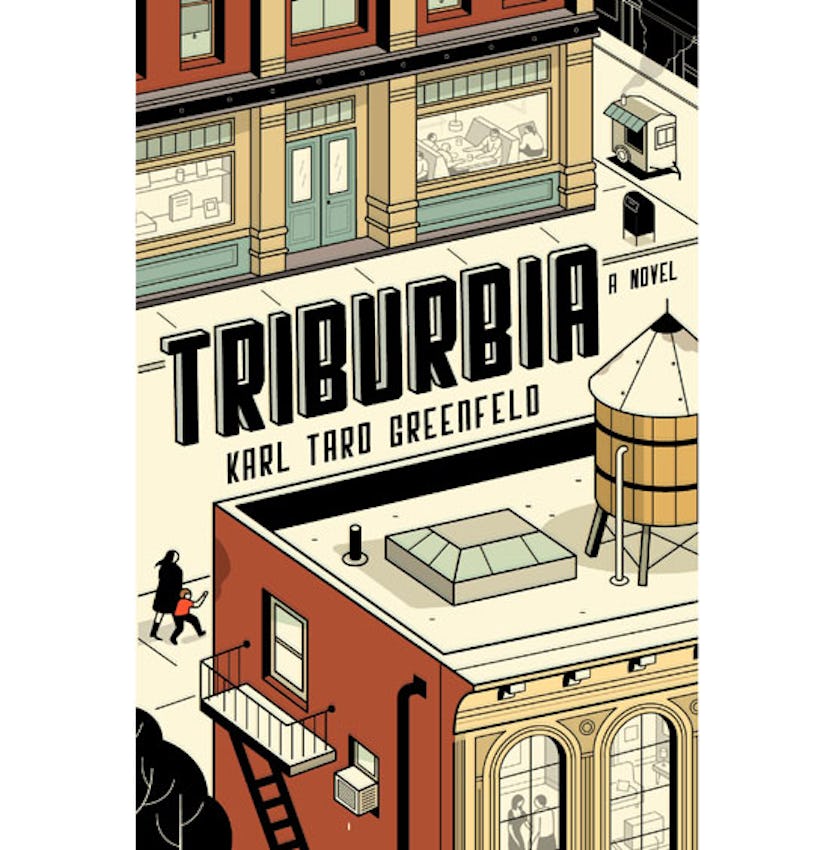Behind the Book: Triburbia
Triburbia, Karl Taro Greenfeld’s new novel, is a loose, fast, and fun read for the end of summer. And for observers of lower Manhattan social circles, it can also be an especially juicy one....

Triburbia, Karl Taro Greenfeld’s new novel, is a loose, fast, and fun read for the end of summer. And for observers of lower Manhattan social circles, it can also be an especially juicy one. The novel, which revolves around fictional avatars of the author’s real-life clique of creative professional-type TriBeCa dads who breakfast together (as profiled in this leery 2008 New York Times Styles section story), is not quite a scorched-earth roman à clef, but much of the book’s considerable satirical pleasure is derived from closely scrutinizing its cast of characters, many of whom seem to be taken, or more often composited, from a pool of Manhattan’s well-known inhabitants.
An example, and maybe the most glaring one: the book’s depiction of a certain female editor-in-chief, who once helmed a magazine that “didn’t survive very long in the digital age,” who liked to keep her staff “off balance by privately relaying her conflicting instructions.” A longtime magazine writer (for GQ, Time, and others), Greenfeld insists that this is in fact an amalgamation of every editor he has worked for. But the sharp eyes at WWD have speculated that the character is a ringer for Joanne Lipman, the former editor of the deceased Portfolio, where, of course, Greenfeld was once a correspondent. (As another former Portfolio staffer told WWD, the excerpt “describes Joanne to a T.”)
Another of the novel’s singular figures is a rampaging European chef who’s colonized TriBeCa’s dining landscape with a pair of restaurants (one French, one German), a more casual eatery, and “a bakery on a prominent intersection.” In the book, said chef is Italian, but to me he sounds remarkably like the French chef David Bouley, who also happens to operate two restaurants (one French, one Japanese) and, up until 2009, a bakery on the corner of West Broadway and Duane Street. It’s hard to ignore those parallels. Of course, I also hope that—beyond his ambition and virtuosity at the range—the playboy and absentee father of the book isn’t otherwise modeled on Bouley.
Then there is the book’s disgraced memoirist, whose fabricated tall tales of superhuman excess and self-destruction jump out immediately to the reader as very like James Frey—who happens, as it were, to live in TriBeCa. (Although the character is too passive to be fully Frey.) And there’s a lot more: more New York types to be deciphered (publicists, film producers, one-hit wonder playwrights, sculptors toiling in obscurity) and more New York names to be dropped (Harvey Weinstein, Michael Stipe, Giuseppe Cipriani). But maybe the novel’s single most intriguing quasi-invention is a young girl, only nine years old, who has the makings of someone “who could have a featured-in-Vogue run through New York society.” Is it a symptom of living in this town that I found myself wondering, about this little girl more than anyone else in the book, Who is that?